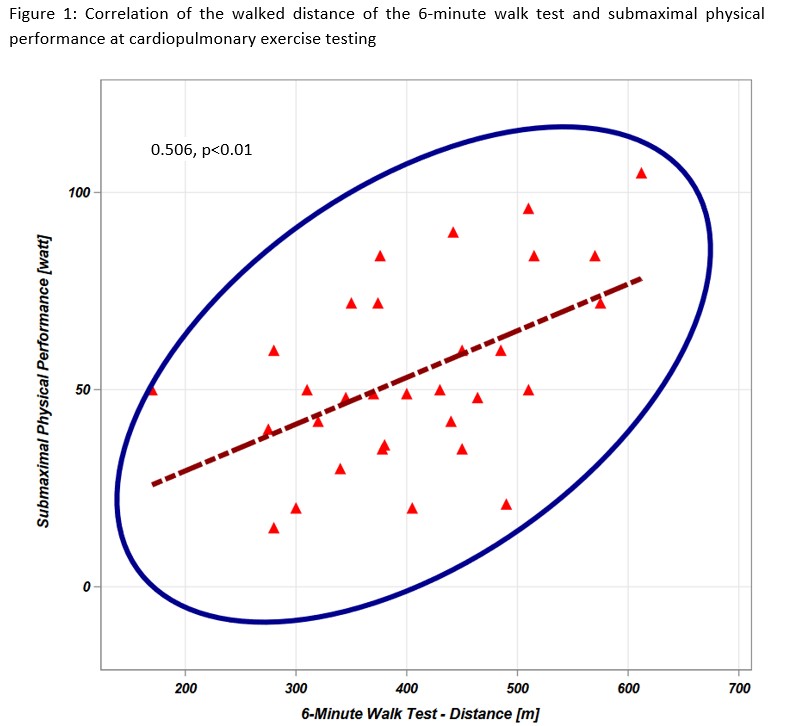Abstract
In patients diseased with ATTR-CM, the 6MWT allows for stratification of submaximal functional capacity (SFC). In this prospective analysis we evaluated patients with ATTR-CM on SFC. We correlated submaximal CPET effort (at 70-80% of peak exercise) with distance covered during the 6MWT to evaluate concurrent validity. We analysed data of 31 patients, 97% being male, with a mean age of 79±6 years and a mean body mass index of 26±4 kg/m2. The median level of N-terminal prohormone of brain natriuretic peptide was 2361 (IQR 3220) ng/L and the mean highly sensitive Troponin T was 57±25 ng/L. Patients walked a mean distance of 406±101 m during the 6MWT. CPET variables were analysed at submaximal oxygen consumption (VO2) at 76±2% of peak VO2. The submaximal physical performance (in watt) was strongly positive correlated with the walked distance of the 6MWT (0.506, p<0.01), seen in Figure 1. The walked distance of the 6MWT and submaximal VO2 showed a moderate positive correlation (0.470, p<0.01) which was also seen between the 6MWT and eliminated carbon dioxide (0.432, p<0.05). This prospective analysis looked at SFC and the concurrent validity between the walked distance of the 6MWT and submaximal CPET parameters in patients diseased with ATTR-CM. This study suggests that both tests are accurate tools for the evaluation of SFC.
